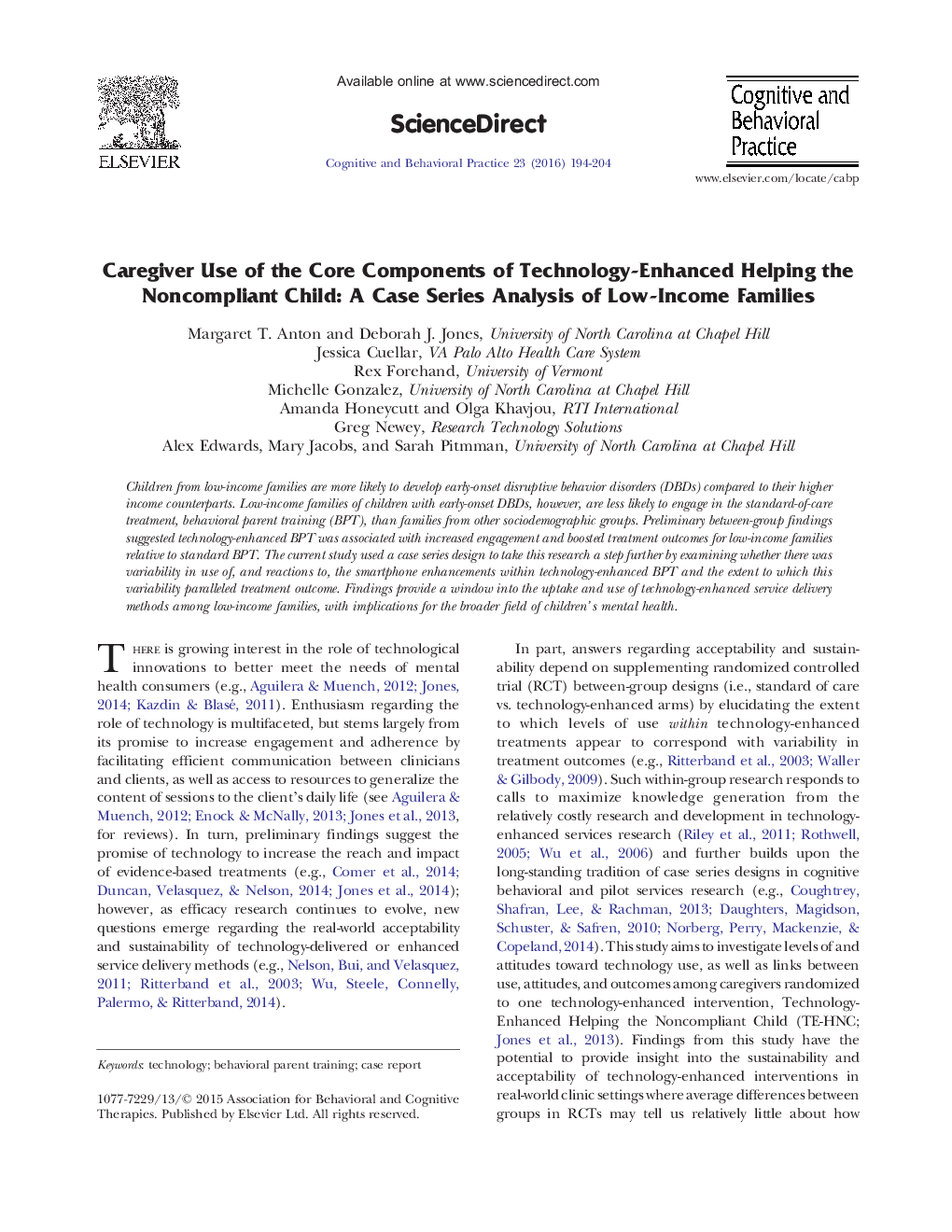| Article ID | Journal | Published Year | Pages | File Type |
|---|---|---|---|---|
| 904234 | Cognitive and Behavioral Practice | 2016 | 11 Pages |
•Smartphone technology may help low-income families engage in services•Case series reveal link between smartphone use and treatment outcomes•Within group differences in smartphone use are related to child outcomes•More smartphone use related to efficient service delivery/full treatment response
Children from low-income families are more likely to develop early-onset disruptive behavior disorders (DBDs) compared to their higher income counterparts. Low-income families of children with early-onset DBDs, however, are less likely to engage in the standard-of-care treatment, behavioral parent training (BPT), than families from other sociodemographic groups. Preliminary between-group findings suggested technology-enhanced BPT was associated with increased engagement and boosted treatment outcomes for low-income families relative to standard BPT. The current study used a case series design to take this research a step further by examining whether there was variability in use of, and reactions to, the smartphone enhancements within technology-enhanced BPT and the extent to which this variability paralleled treatment outcome. Findings provide a window into the uptake and use of technology-enhanced service delivery methods among low-income families, with implications for the broader field of children’s mental health.
